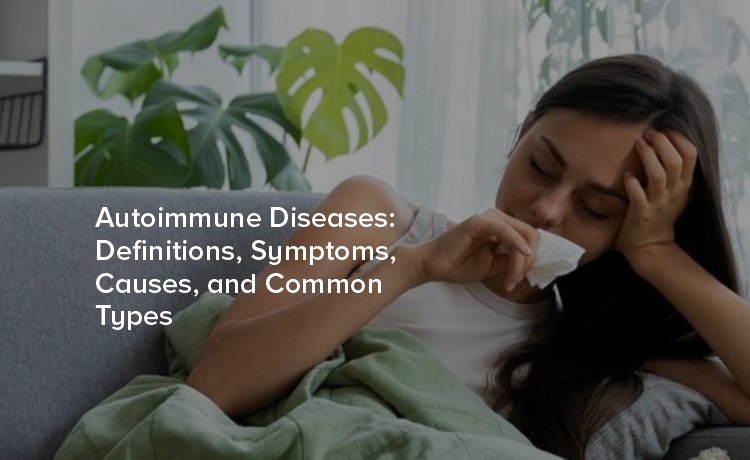
Autoimmune diseases are a complex mix of health conditions characterized by the body's immune system attacking its healthy tissues. This can lead to a wide range of disorders, affecting numerous organs and bodily functions. Understanding these conditions is essential, as they impact millions worldwide and require nuanced approaches to diagnosis and treatment.
Autoimmune diseases occur when the immune system, which typically defends the body from harmful substances is unable to differentiate healthy body tissued harmful mistakenly attacks its own healthy cells. There are more than 80 known types of autoimmune diseases, with each having distinct symptoms and affected areas within the body.
Autoimmunity results from a complex interplay of genetic and environmental factors.
The symptoms of autoimmune diseases are incredibly diverse, ranging from mild to severe and often depending on the specific condition and affected body part. However, there are some common symptoms that individuals with autoimmune diseases may experience:
Fatigue: A persistent feeling of tiredness is a common complaint for many autoimmune disease sufferers.
Lowgrade Fever: Chronic or intermittent fevers can sometimes be a sign of an autoimmune condition.
Aching Muscles and Joints: Body aches and joint pain are typical complaints for many autoimmune sufferers.
General Malaise: This includes a general feeling of not being well, which can be challenging to diagnose.
Each autoimmune disease may also have specific symptoms. For example, rheumatoid arthritis is characterized by joint pain and inflammation, while type 1 diabetes leads to blood sugar dysregulation and, if left untreated, organ damage.
The causes of autoimmune diseases are unknown. While several factors can contribute to the development of these conditions, there are a few primary mechanisms at play:
Genetics: Certain genes may predispose individuals to developing autoimmune diseases. However, the presence of these genes does not guarantee the development of the condition.
Environmental Triggers: Infections, physical or emotional trauma, and exposure to certain environmental agents can trigger the onset of autoimmunity.
Dysregulation of Immune Response: The immune system's failure to distinguish between self and non-self may lead to the inappropriate attack on healthy tissues.
Understanding the causes of autoimmunity is crucial for both prevention and treatment. While there's no single cause that fits all autoimmune diseases, ongoing research continues to uncover more about these complex disorders and how to manage them effectively.
The family of autoimmune diseases is vast and includes various well-known conditions:
Rheumatoid Arthritis (RA)
RA is an autoimmune disease that predominantly affects the joints, leading to inflammation, pain, swelling, and loss of function. It can also affect other body systems, such as the cardiovascular or respiratory systems.
Type 1 Diabetes
In Type 1 diabetes the immune system destroys the insulin-producing cells in the pancreas. This results in high blood sugar levels and various complications.
Multiple Sclerosis (MS)
MS is characterized by the immune system attacking the protective covering of nerves, known as myelin. This disrupts the flow of information within the brain and between the brain and the rest of the body, leading to a range of symptoms.
Psoriasis
Psoriasis is an autoimmune condition that affects the skin, causing rash scaling on the skin.
Celiac Disease
Celiac disease is an immune reaction to eating gluten, which is a protein found in wheat, barley, and rye. Over time, this immune response damages the lining of the small intestine and can lead to malabsorption of nutrients.
While these are just a few examples, the breadth of autoimmune diseases showcases the diverse ways our immune systems can falter and the importance of tailored medical approaches to each condition.
Diagnosing autoimmune diseases can be complex due to the overlap of symptoms with other conditions and varying degrees of manifestation. A family history of autoimmune diseases, a thorough physical examination, and a series of blood tests often play pivotal roles in diagnosis.
Treatment for autoimmune diseases aims to reduce immune system activity, manage symptoms, and maintain bodily function. Treatments vary depending on the specific condition and may include:
Medications: Such as corticosteroids, which suppress the immune system's activity to reduce inflammation, or pain relievers to manage chronic pain.
Physical therapy: To improve joint function and reduce pain in conditions like rheumatoid arthritis.
Plasma exchange: A process that filters the blood to remove harmful antibodies in certain autoimmune conditions
Lifestyle changes: This includes dietary modifications, exercise regimens, and stress management techniques.
Smoking can make the symptoms worse. Quit smoking.
Despite the complexity of autoimmune diseases, medical research is focused on understanding these conditions better, with a long-term goal of finding a cure. Advances in areas such as genetics, immunology, and biotechnology have led to breakthroughs in treatments and increasingly targeted therapies.
These breakthroughs offer hope for the millions who live with the day-to-day challenges of autoimmune diseases, moving us closer to a future where personalized medicine can provide effective, long-term solutions for these enigmatic conditions.
Autoimmune diseases are a significant public health challenge, affecting a substantial portion of the world's population. With their diversity and potential severity, education and awareness are key to driving research, improving diagnostics, and developing effective treatments.
For those living with autoimmune diseases, it's essential to work closely with healthcare providers to manage symptoms and maintain the best possible quality of life. Support groups, advocacy organizations, and the broader healthcare community can be valuable resources in the ongoing battle against these conditions.